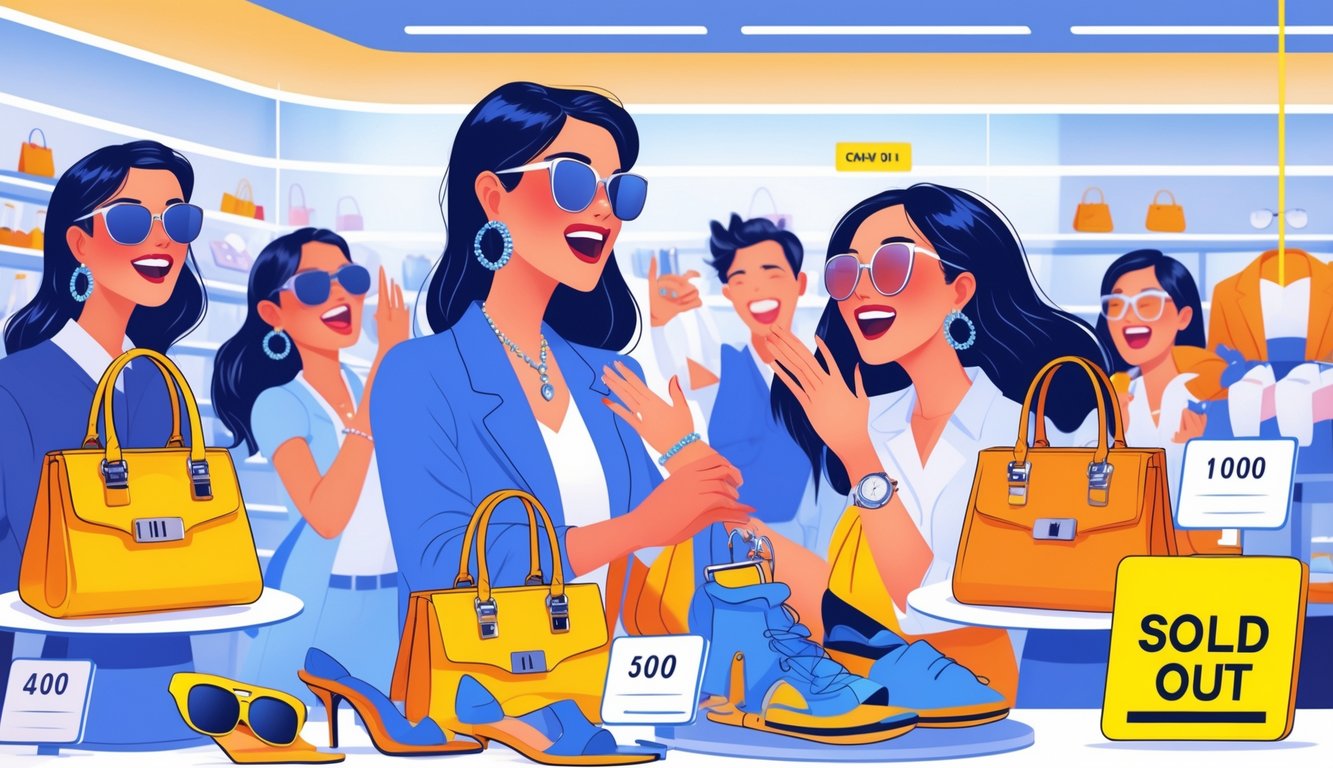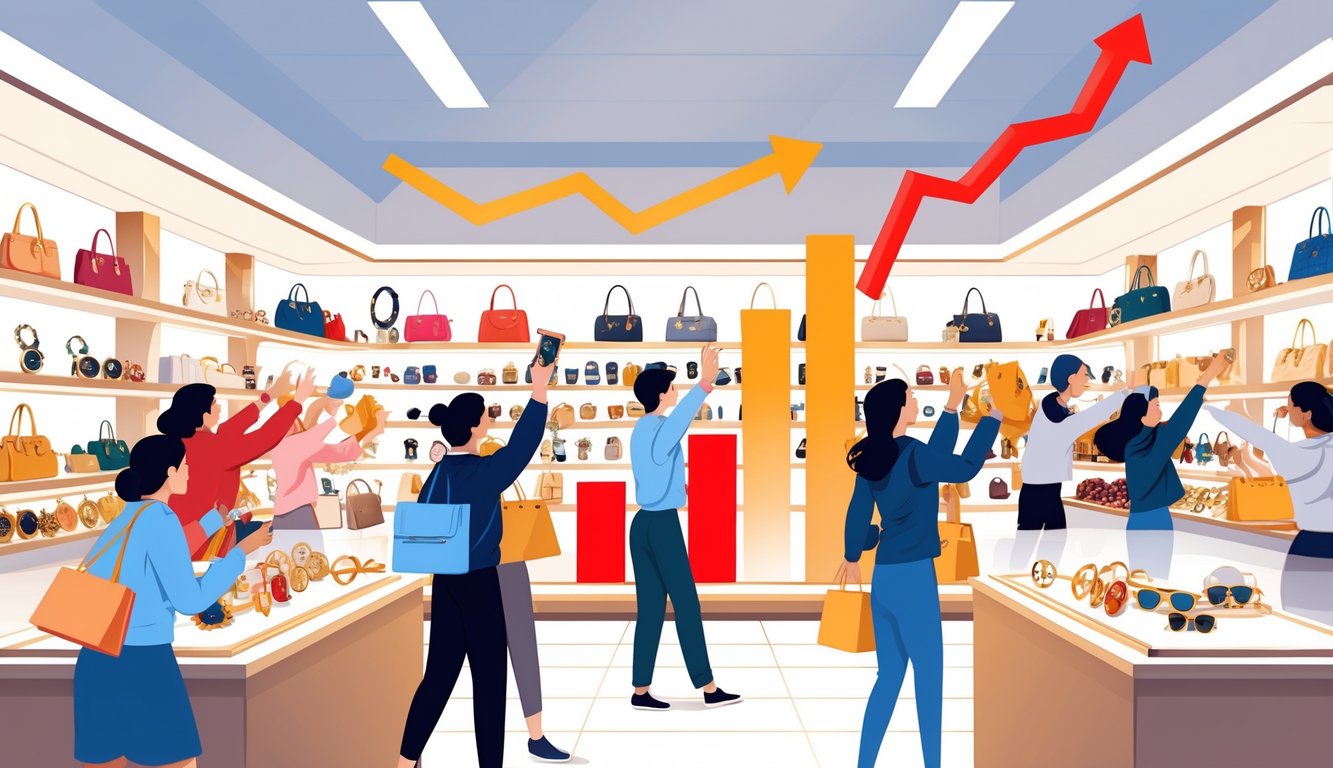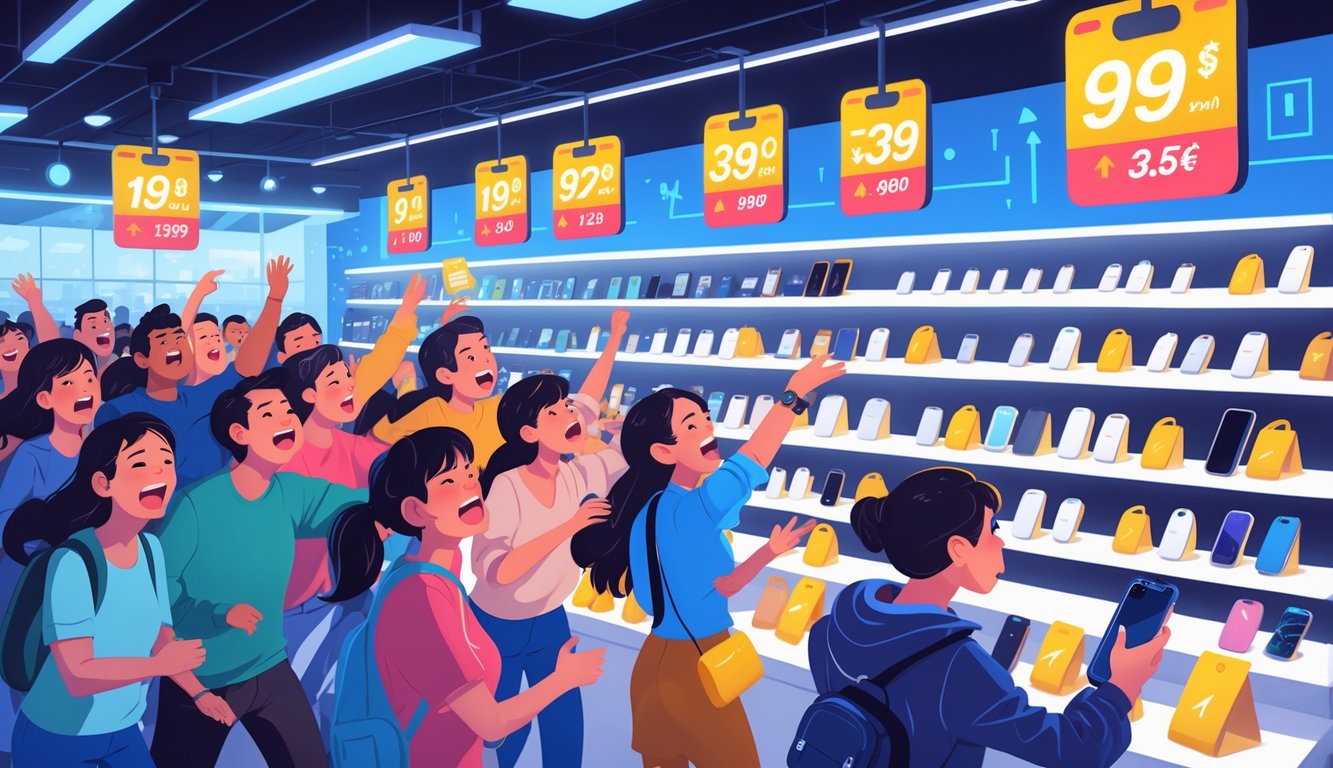
So I’m doomscrolling TikTok at, like, 3 a.m.—don’t judge—and suddenly those “TikTok leggings” are everywhere, except, whoops, they’re gone. Sold out. Price is now $60+ and I’m sitting here wondering, was this always how stuff worked? My roommate’s hair clip? Used to be $12, now it’s $29, shipping in three weeks, all because it got 200k likes in a video where someone dropped it on the floor. Viral accessory trends are basically turning prices into rollercoasters—good luck grabbing anything basic before it’s double what you paid last month (seriously, look at this breakdown of how products sell out and prices spike). Last time I let FOMO win, I spent $20 on “cloud slides” I literally never wore. FOMO is the worst.
What actually makes me lose it? The most random stuff—scrunchies, those mini bags, ugly-cute chunky rings—gets a viral moment and suddenly retailers are panicking, tweaking their pricing bots (I asked a Shopify dev, they straight-up have scripts that auto-raise prices as soon as a hashtag crosses some magic number). One viral video and the supply chain melts down. Amazon’s algorithm starts pushing “dupe” versions before the real thing even runs out, which feels like cheating, honestly. Ask a small business owner—one influencer tags your product, you’re drowning in backorders, or you’re explaining why your beaded purse is $70 more this week. Nobody’s ready.
Can I predict which thing will explode next? Not a clue. Why did that plush avocado pillow get so huge? No idea. But wow, the road from “nobody cares” to “sold out everywhere” is paved with group chats and late-night impulse buys. My dermatologist says SPF 30 is fine (is it though? I never reapply, oops), but who has time for sunscreen when you’re watching price trackers for claw clips across three tabs?
What’s Driving the Accessory Price Surge

I can’t keep up. Bucket hats are everywhere, TikTok-certified, then, poof, resale prices triple and everyone’s fighting over what “limited” even means now. Accessories are weird—trending today, extinct tomorrow, and there’s always some excuse about “supply chain” or “influencer demand” baked into the markup. Still bitter about the time a friend told me, “Just wait for the hype to die down”—which, yeah, made it worse. Retailers jacked up the price overnight. Classic.
Role of Viral Trends
So I wake up, scroll my feed, and there’s a random rhinestone hair clip—thousands of likes, then it vanishes. No warning, just gone. Micro-trends barely exist and then suddenly every store is charging three times more. Analysts say 80% of this year’s price jumps—phone charms, beaded jewelry, chunky sunglasses—are tied right to TikTok edits and those wild Instagram algorithm surges.
Consumer surveys (NPD Group, 2024, if you care) keep blaming these spikes on viral moments. Manufacturers can’t restock instantly, so sellers just slap “limited edition” on plastic junk and charge $20 more. But honestly? Supply and demand doesn’t explain why a scrunchie pack tripled in price because a singer wore it to breakfast and it was gone by lunch. Make it make sense.
Maybe some people love the chaos. Here’s a thing: retailers run bots that stalk trending hashtags and update prices in real time. There’s an impact, but unless you’re glued to micro-trend trackers (I’m not), you’re out of luck.
Influencers and Social Media Influence
And then there’s influencers. They casually show a bag or acrylic hoops in some “outfits of the week” video and—boom—every search result jumps 30%. Not exaggerating. CNBC literally did a segment on how wild these influencer surges get, especially on TikTok and Instagram, where someone unboxes a plain cardholder and suddenly you can’t buy one anywhere.
I’ve worked with brands who panic-DM at 2 a.m. after some B-list creator goes viral with a “new” headband that’s just old stock. Regular shoppers? Forget it. Either you’re glued to Instagram stories or you miss out. A reseller once told me, “Price doubles the second they tag it, every single time.” She wasn’t joking.
Brands try to team up with micro-influencers for a steady trickle of hype, not a tidal wave, but honestly? It’s a crapshoot. I watched a niche earring brand go out of stock for a month after one viral post. The owner swore, “We’re prepared.” Nope. Follower counts beat supply chain math every time—just look at the ROBLOX accessory price floor thing. It’s wild.
How Viral Items Sell Out Overnight

Supposed to be a chill scroll, but no, suddenly I’m paying $45 for a hair curler I’ve never seen before. Overnight, half my group chat’s waiting for restock emails. TikTok Shop notifications? Cart abandonment rates drop for “it” accessories—nobody wants to be late. I get it, but also, why are we like this?
The Mechanics of Going Viral
You scroll once—just once!—suddenly, boom, pastel claw clips, the “Pink Stuff” cleaner, those heatless curling ribbons, all gone. Pink Stuff sold out six times. Literally 150,000+ people on a preorder list. E-commerce sites scramble, TikTok shops push “limited drops,” and prices jump as sellers realize FOMO is its own currency.
Honestly, if I see one more influencer “unboxing” video… I only click for the algorithm. Even Shopify’s CEO commented on the Popflex skort thing—10,000 preorders after Taylor Swift wore it. He called it a “herd effect.” Meanwhile, my supplier chats go nuts at 2 a.m. with inventory alerts. Small brands try to decode why a sparkly phone charm sells out after two dupe videos with some mid-tier beauty creator. Nobody can predict this. If they say they can, they’re lying. Maybe my aunt’s right: TikTok trends were invented by bored MBA students with a grudge.
Consumer Behavior During Trend Waves
Buyers don’t even think. It’s just, “I need it!” Patience? Gone. I’ve seen TikTok Shop trend graphs spike so hard overnight it looks like a data glitch. Scarcity rules: prices spike from scarcity, reselling goes nuts (nail stickers, iridescent puffs), and I’ve joined waitlists just to avoid missing out again. I’m not proud.
My sisters treat trending items like rare band merch. “Anything but basic,” they say, hoarding must-haves and stockpiling dupes for when the hype dies. It’s not loyalty. It’s panic. Dermatologists still say SPF 30 is enough—wait, did I already mention that?—but if a face mist goes viral, that’s all they’ll buy. Nobody’s reading the ingredients. People jump from one hot product to the next, trashing yesterday’s favorite. E-commerce loves this. FOMO mutes everyone’s common sense.



